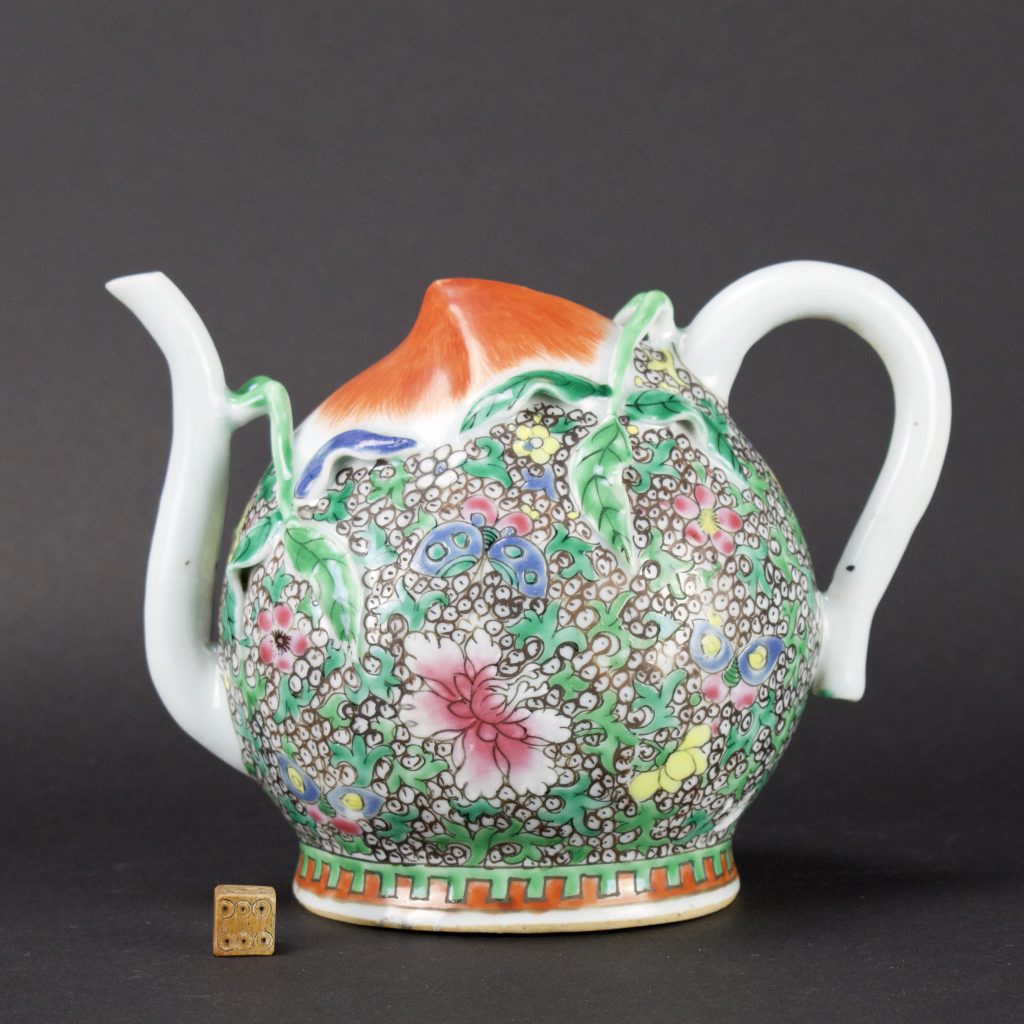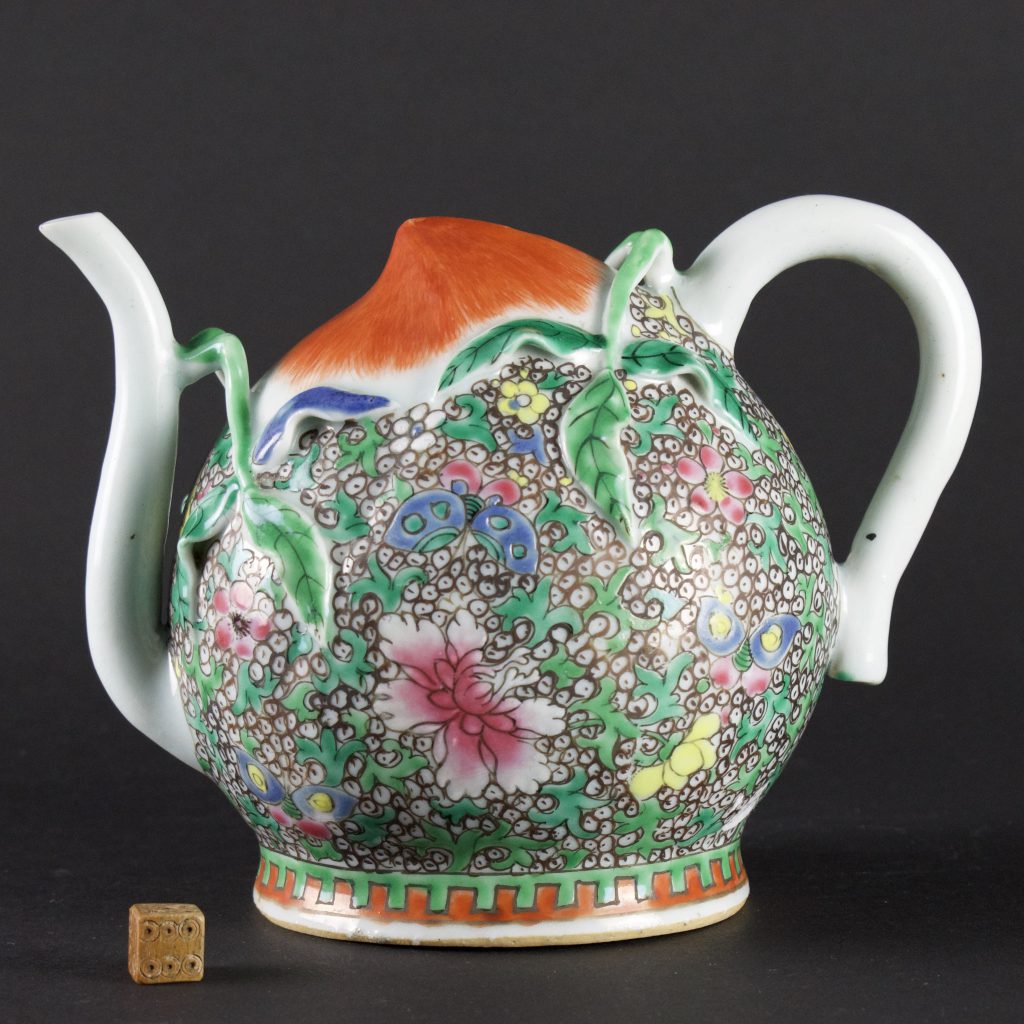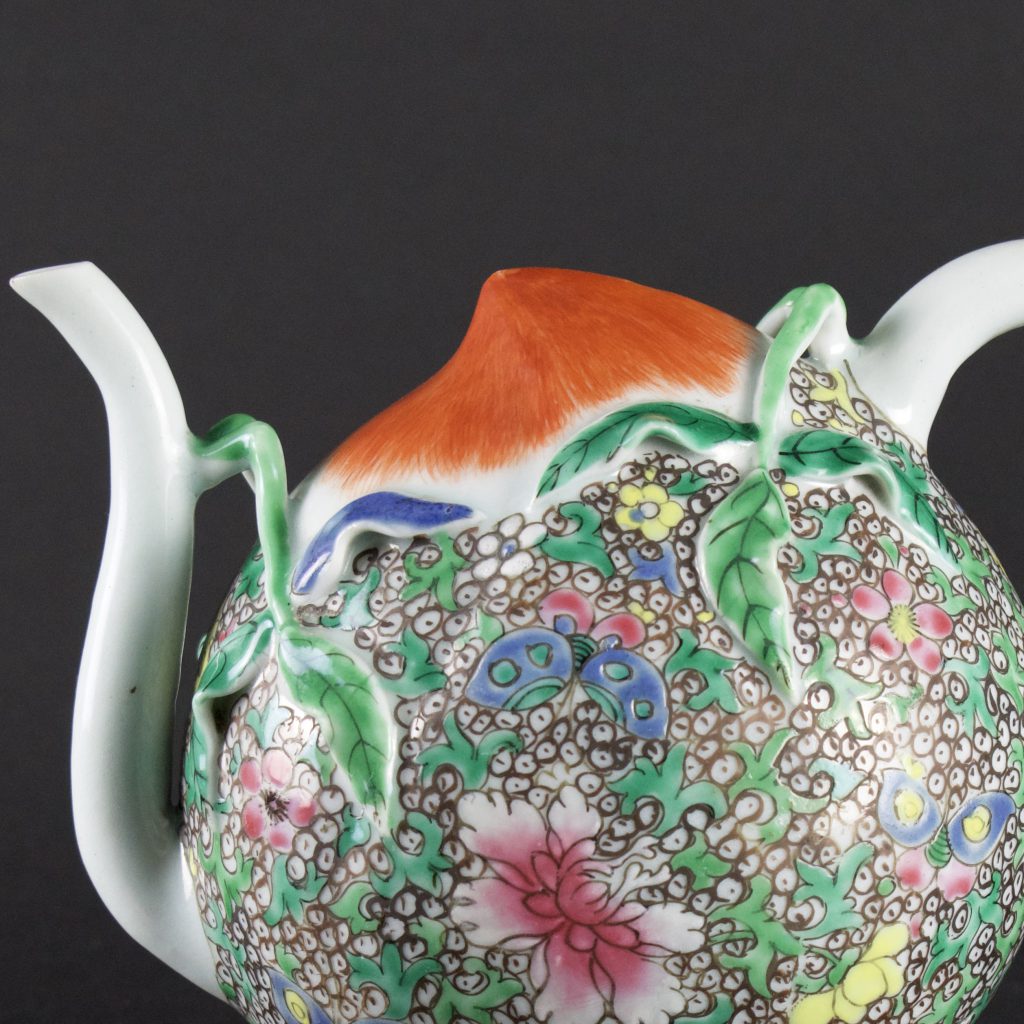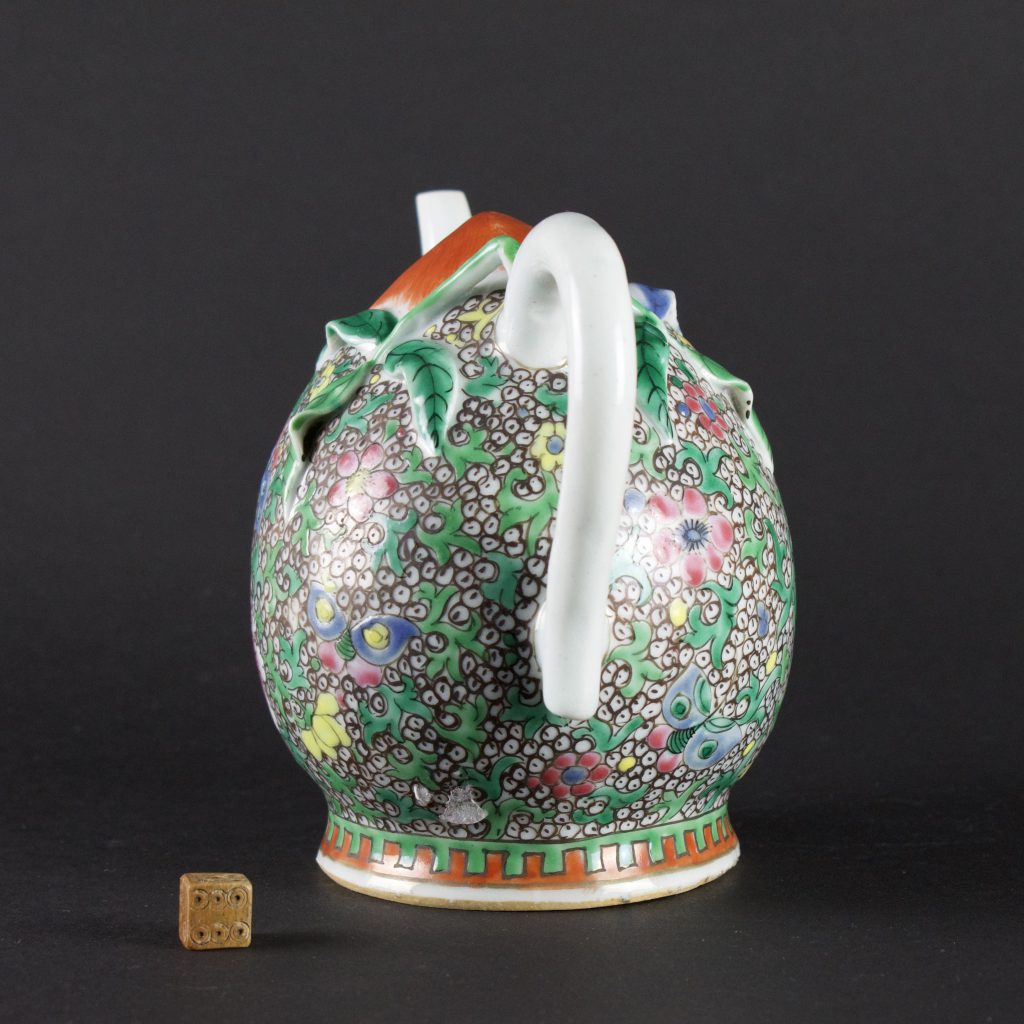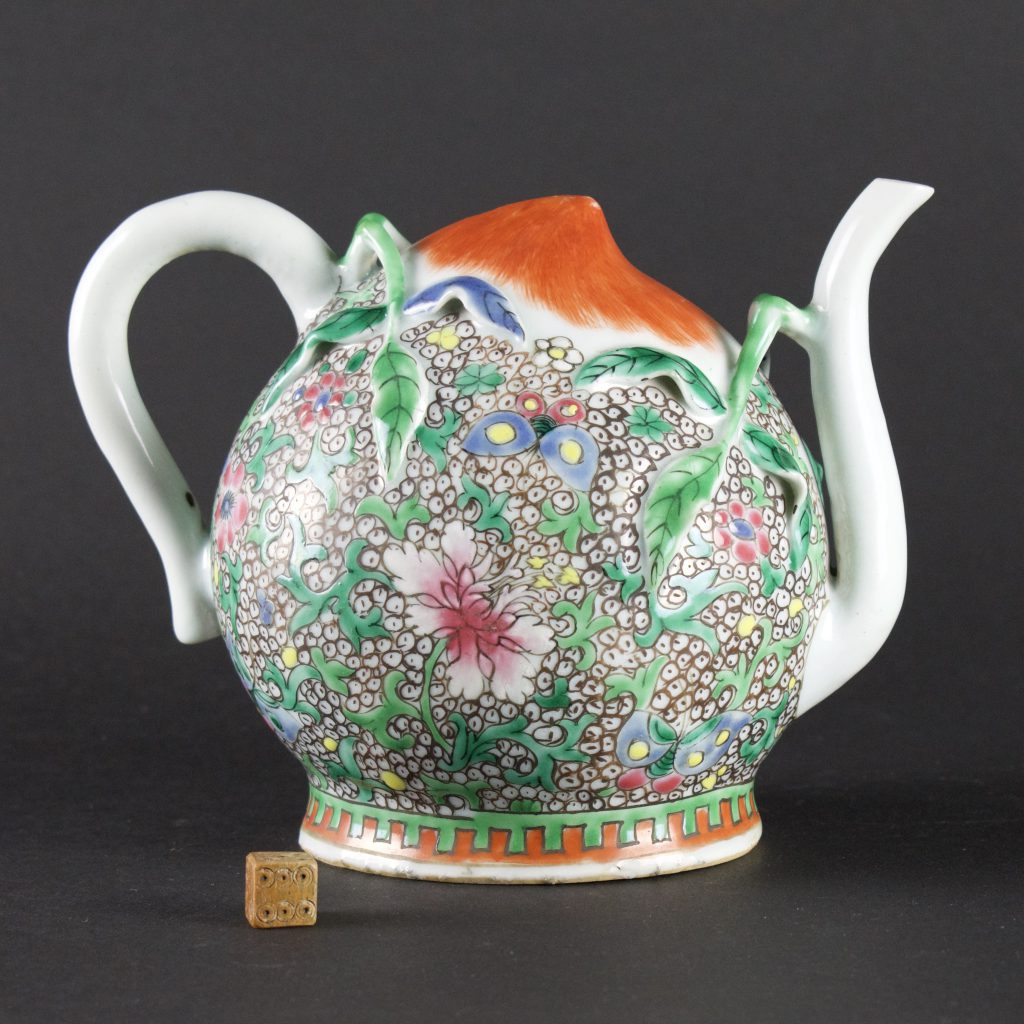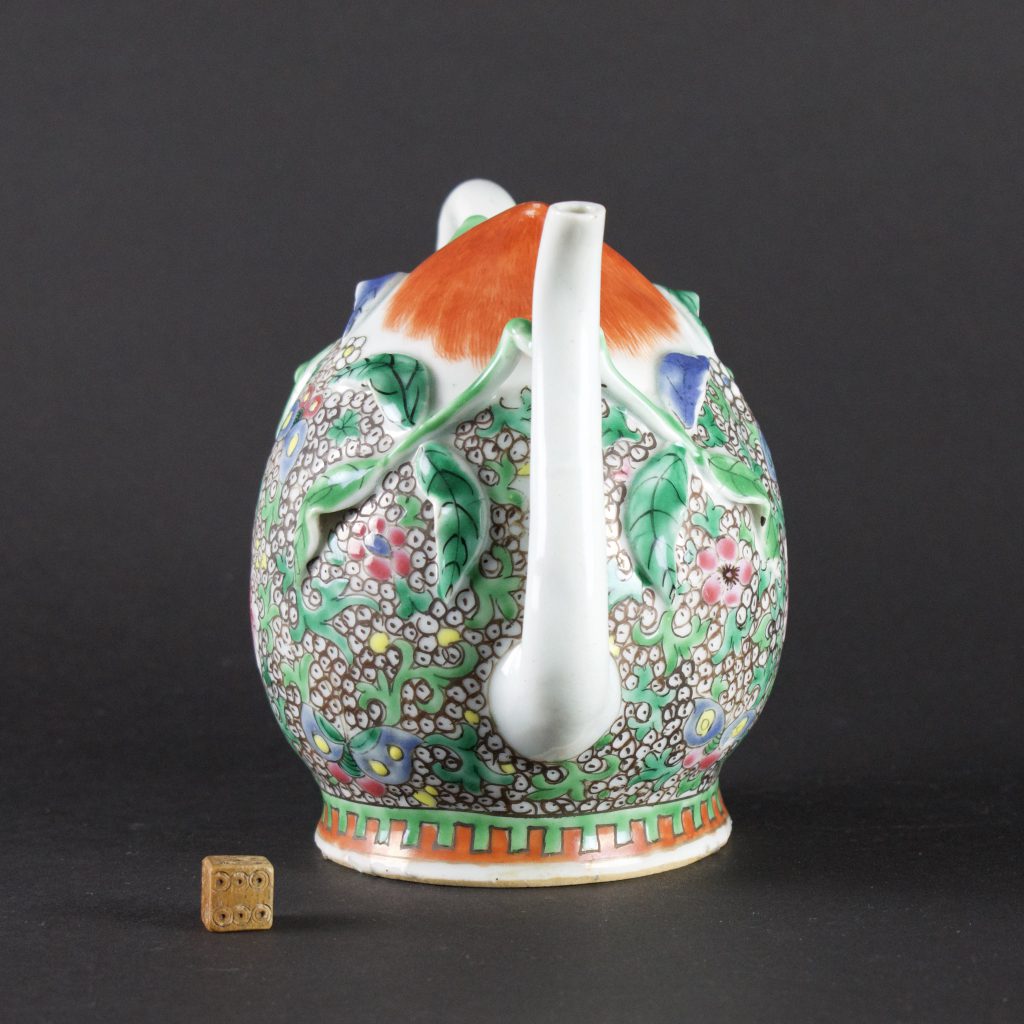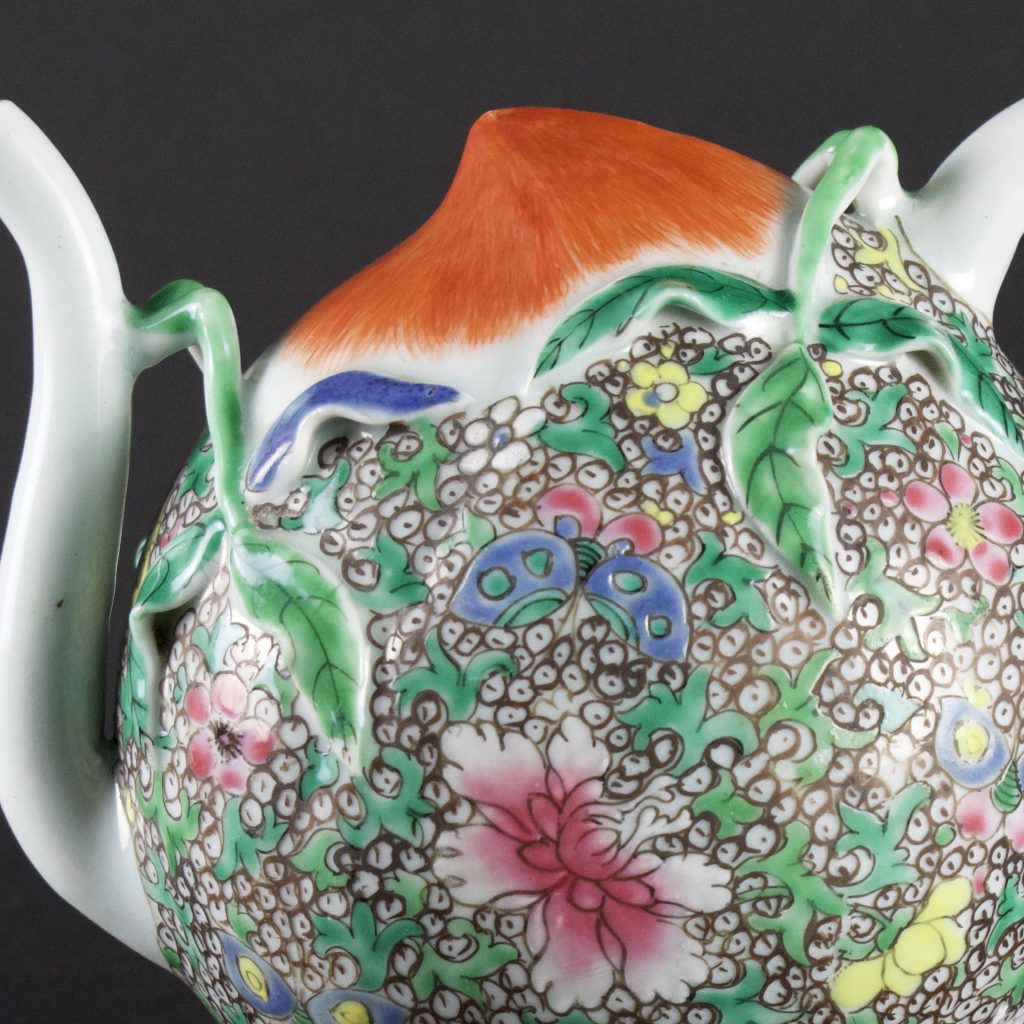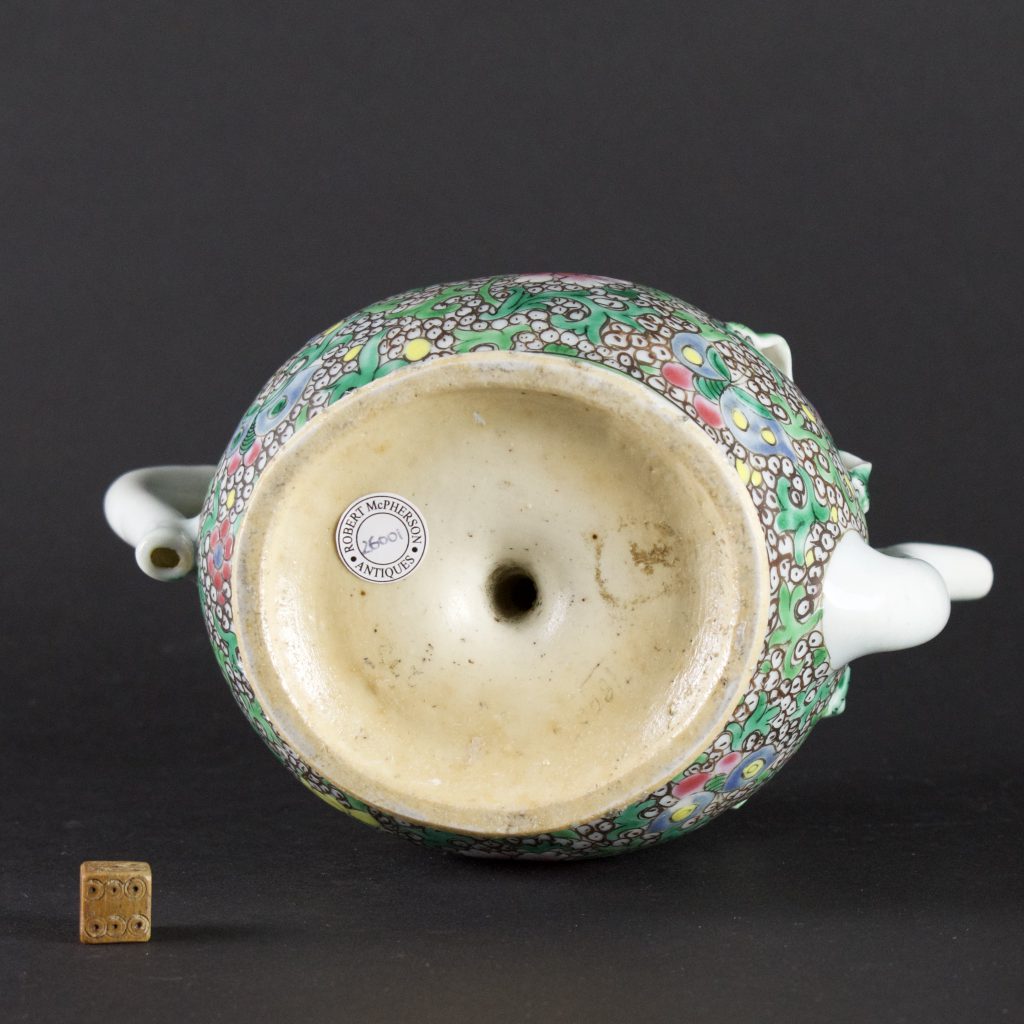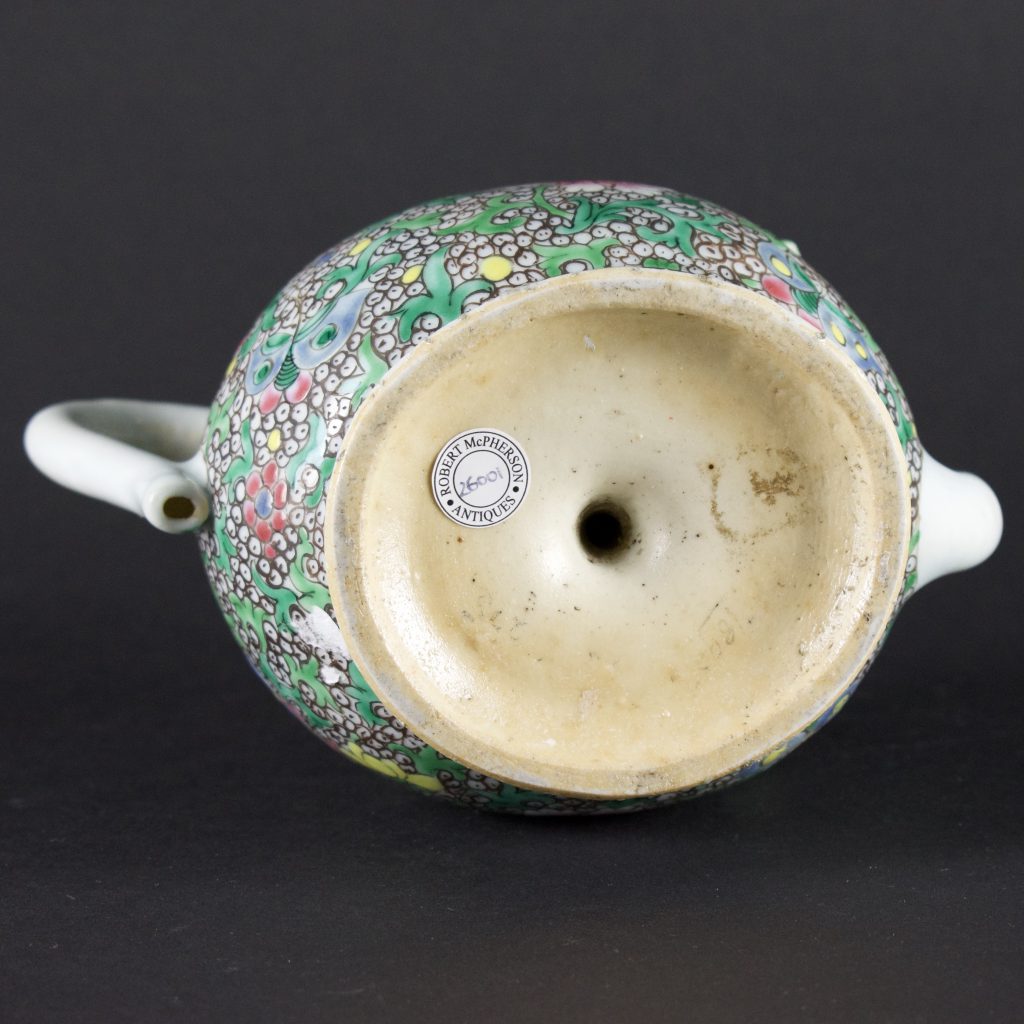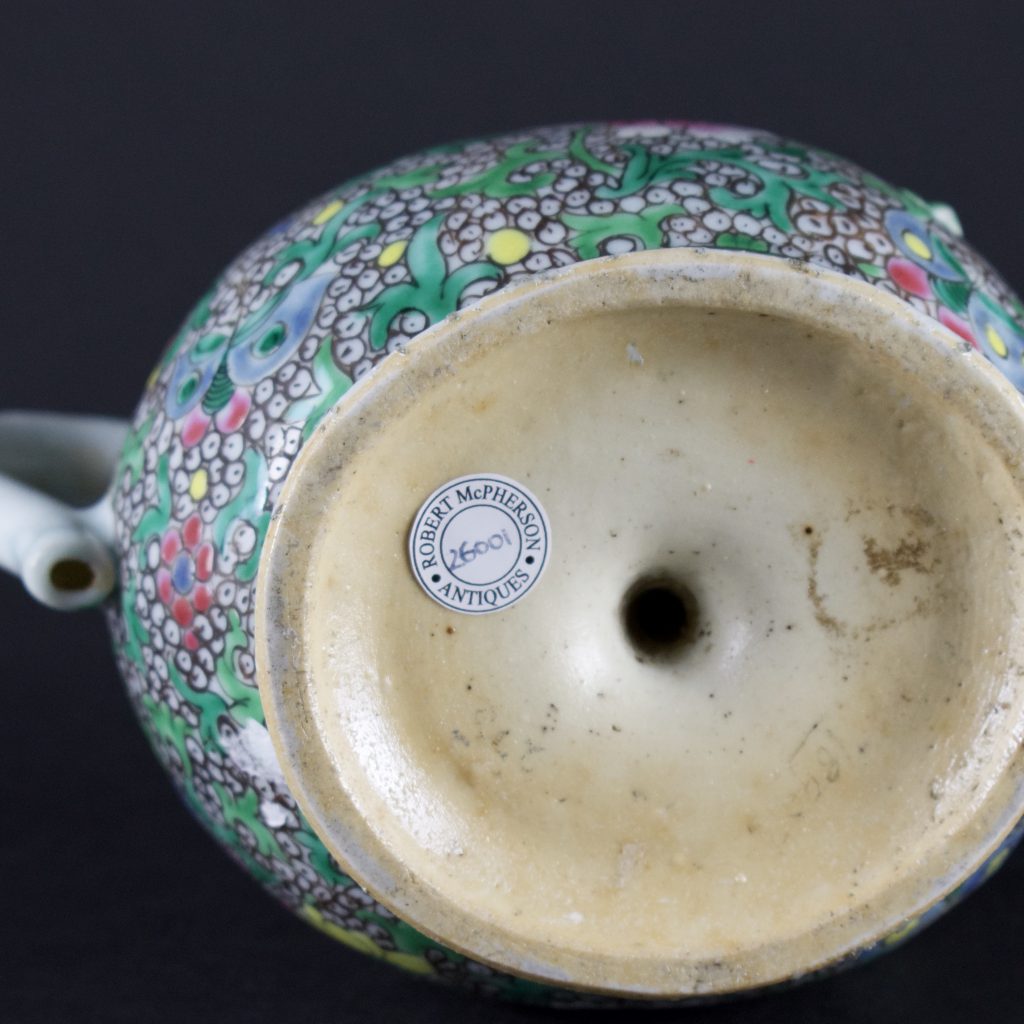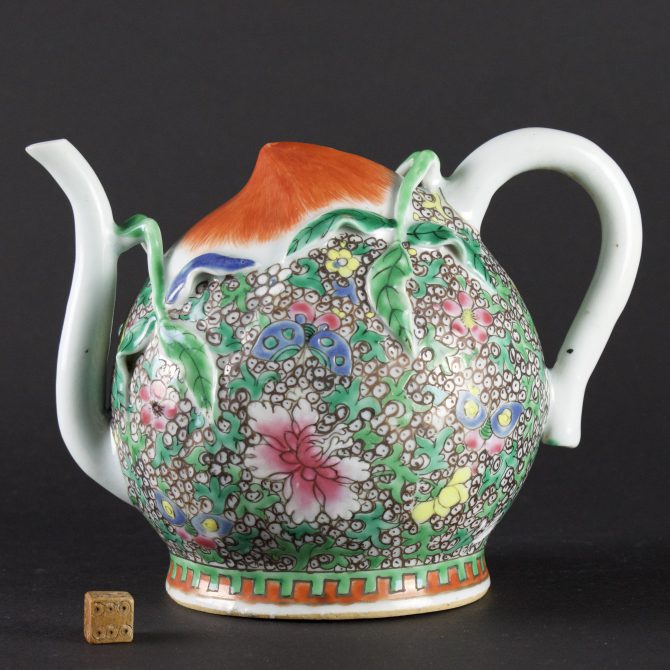
An 18th Century Chinese Famille Rose Porcelain Cadogan
A Chinese Export Porcelain Cadogan Teapot c.1750 – 1770. The peach shaped form teapot is modelled on a Chinese taste wine ewer (see below for references). The decorated in the Famille Rose palette is of flowers, including peony and prunus as well as butterflies in flight, all set against a seeded ground. The pointed top is painted using iron reddish orange to imitate the ripeness of the fruit. Two twigs help support the spout and two further twigs issue from the top of the handle. The base which has a very thin coating of glaze, has a hole in which to fill this novelty teapot. This Cadogan has a hollow handle which is open at the bottom.
SOLD
- Condition
- In excellent condition, minor rubbing to the iron redish orange at the top of the teapot.
- Size
- Length 18 cm (7 inches)
- Provenance
- N/A
- Stock number
- 26001
Information
Cadogan Wine Ewers :
These peach form winepots were a Chinese novelty meant to be a puzzling curiosity to a gathering of people who were sharing the wine. It appears there is no way to fill the ewer as there is no aperture on top, it seams impossible to fill it from the hole beneath as it would run straight out. So how was it filled ? There is a funnel in the base, so when the pot is righted the liquid stays inside. The later name, Cadogan, refers to teapots made in Europe, as well as the original Chinese wine. It is said that William Cadogan, 1st Earl Cadogan (1675 – 1726), was the first person to own a Chinese winepot of this shape, hence the name. In England the Cadogan teapot was particularly popular in the second quarter of the 19th century.
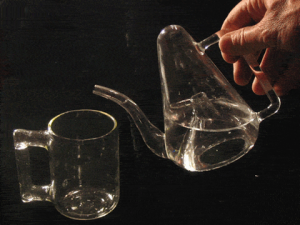
Other Examples of the Cadogan Form
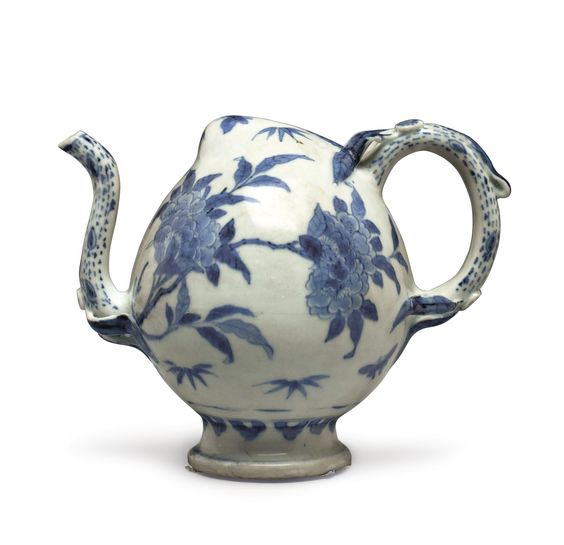
An Early Example of a 'Cadogan Teapot' from the Hatcher Cargo of c.1643.
Late Ming Porcelain From the Hatcher Cargo c.1643
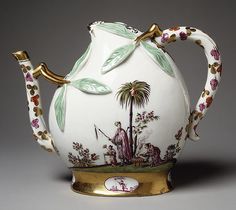
Meissen `Cadogan Teapot' c.1725
(Metropolitan Museum of Art)
Famille Rose Porcelain :
China`s ceramics industry has for thousands of years be connected to events in the world outside it`s own borders. Importing materials, assimilating foreign ideas, foreign tastes and inventions, as well as making ceramics for cultures completely foreign to it`s own tastes and ethos China has always adapted it`s ceramics industry to fit the needs of it clients who ever they may be. It was during the Qing dynasty, especially from the late 17th century, that the Chinese became especially interested in Western technology and science. Famille Rose enamels were developed as a consequence of this interaction, the Chinese referred to these enamel colours as foreign colours from as early as 1734 but there origin can be traced back to the 1720`s if not earlier. The impetus for the development of this new palette was the direct involvement emperor Kangxi (1662-1722) who desired to improve expertise in the manufacture of all crafts, especially in relation to learning about technology from abroad. Famille Rose enamels were different to the earlier Famille Verte enamels in a number of ways, the most obvious being the colours used, but the enamels themselves were different in that the translucent colours of the earlier palette were making way to thicker impasto opaque enamels of Famille Rose. The rose colour that gives its name to this colour scheme is created from colloidal gold (a suspension or colloid of sub-micrometre-sized particles of gold in a fluid). This ruby red colour was augmented by two other newly introduced coloured enamels, an opaque white which was made from fine crystals of lead arsenate, the other new colouring agent was lead stannate used for the opaque yellow. These colours, while new to China, were certainly not new to Europe but the effect of them on porcelain certainly was new. Famille Rose didn`t entirely replace Famille Verte as such but it certainly became far more popular. Famille Rose enamel was used in the Imperial workshops to paint some of the most complex intricate designs ever carried out on Chinese porcelain, it was also used for Chinese taste or domestic market porcelain, but was also used to decorate a vast array of Chinese export porcelain of all shapes and sizes.
